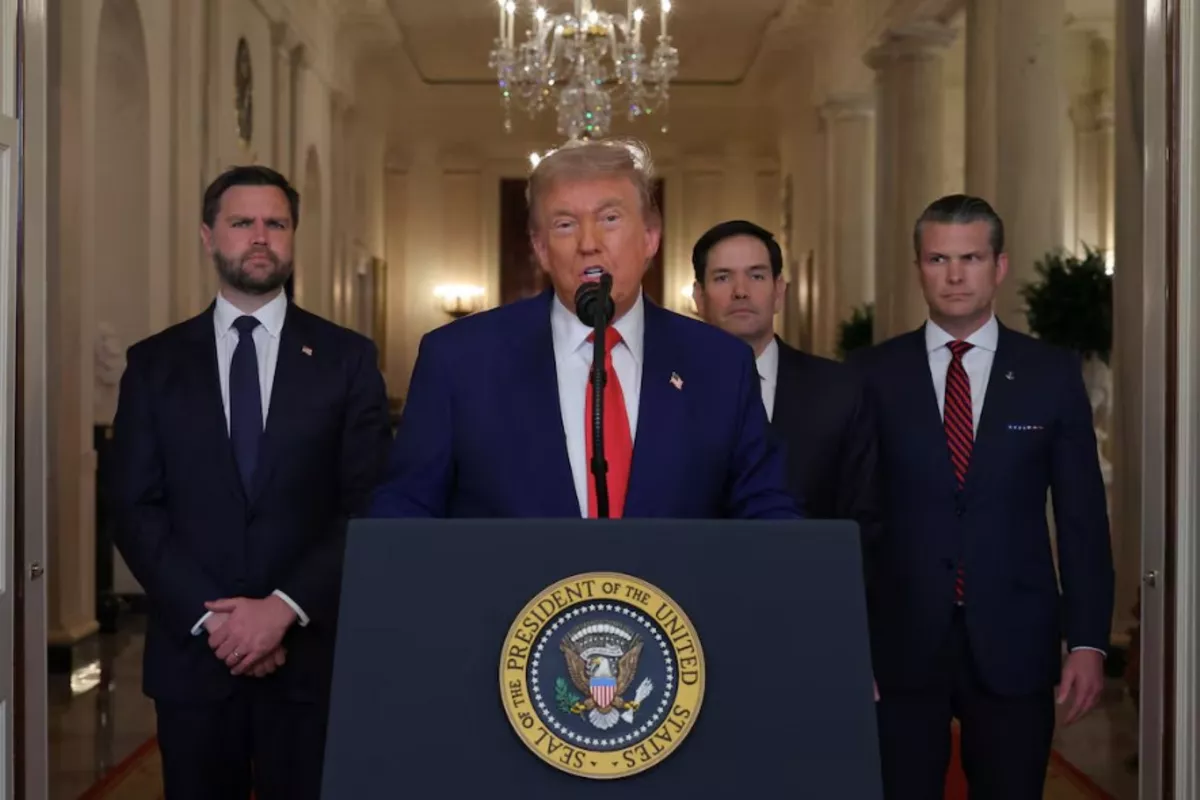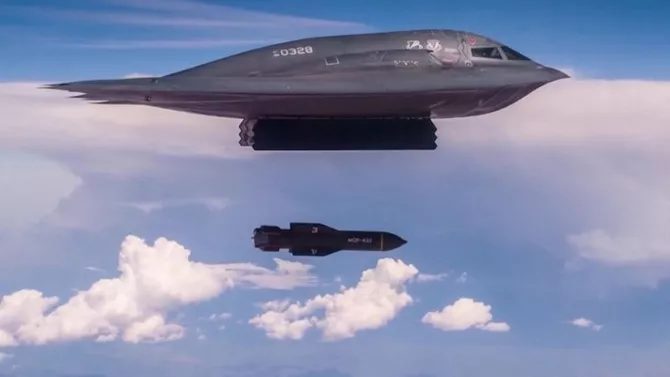
Reuters
On the night of June 21-22, 2025, a long-anticipated event took place. U.S. President Donald Trump announced the “successful bombing” of three key Iranian nuclear facilities by the U.S. Air Force-Fordow, Natanz, and Isfahan. The largest uranium enrichment plants in Iran were reportedly completely destroyed.
Prior to the strike, Turkish President Recep Tayyip Erdoğan had attempted to arrange a meeting between Iranian President Masoud Pezeshkian and Donald Trump. However, the plan failed when all communication with Supreme Leader Ayatollah Ali Khamenei-who had isolated himself in a bunker and cut off all contact-proved impossible. The two-week deadline for negotiations set by Trump expired without result.

Source: BBC
The U.S. entry into the Israel-Iran conflict came as an “expected surprise.” Until the airstrike, Trump had avoided making any direct statements about potential American involvement. Then, in a decisive move, B-2 bombers struck three of Iran’s most critical uranium enrichment facilities. On social media, President Trump declared:
“We have successfully completed a strike on three nuclear facilities in Iran-Fordow, Natanz, and Isfahan. All of our aircraft are now outside Iranian airspace.”
Fordow is considered the most fortified element of Iran’s nuclear program, hidden deep within mountainous rock. Israeli attempts to destroy it from the air had all failed. Mossad had even explored ground operations involving special forces. Analysts had long warned that only 13-ton GBU-57 bunker-buster bombs, deployable exclusively by U.S. B-2 bombers, could threaten the site. In the days leading up to the operation, several B-2s were repositioned closer to Iran-interpreted by many as a sign that the U.S. was preparing to join the war on Israel’s side.
Iranian officials confirmed the bombings. A spokesperson for the Crisis Management Headquarters in Qom Province stated:
“A few hours ago, after activating Qom’s air defense systems and identifying hostile targets, part of the Fordow nuclear facility was attacked by enemy forces.”

Soiurce: newsnationnow
At the same time, officials in Isfahan Province reported that “the nuclear facilities in Isfahan and Natanz were also targeted by the enemy.”
According to reports, the U.S. used six GBU-57 bombs on the Fordow site, dropped from B-2 stealth bombers. This was not just an airstrike-it was a show of force and a clear demonstration of U.S. capabilities. The attacks on the other two sites, Isfahan and Natanz, involved around 30 Tomahawk cruise missiles launched from Ohio-class submarines. Fox News correspondent Jennifer Griffin noted that Isfahan was the most complex target of the operation.
Following the strikes, President Trump held a phone call with Israeli Prime Minister Benjamin Netanyahu. In his official statement, Trump emphasized:
“Netanyahu and I worked as a team-perhaps like no team has ever worked before. We’ve come a long way in eliminating this terrible threat to Israel.”
Netanyahu, in turn, stated that his promise to destroy Iran’s nuclear sites had been fulfilled-with U.S. support.
In an address to the American people, Trump said:
“Iran-the bully of the Middle East-must now make peace. If they don’t, future attacks will be far more devastating. For 40 years, Iran has chanted ‘Death to America, Death to Israel.’ They’ve killed our people, torn off their limbs with bombs. That was their specialty. We lost over a thousand Americans, and hundreds of thousands more across the Middle East and the world died because of their hatred.
Many of those lives were lost due to their general, Qasem Soleimani. I decided long ago that I would not let this continue. It ends now. There is no army in the world that could do what we did today. Not even close. Nothing like this has ever existed before.”
Now, Iran’s future hangs in the balance. According to The New York Times, even if Supreme Leader Khamenei is eliminated, the entrenched religious-military establishment that has ruled for nearly five decades may survive. Some speculate that the Islamic Revolutionary Guard Corps (IRGC) could attempt to form a more West-friendly government. However, others warn of a possible replacement of Khamenei with an even more radical figure. Ultimately, the future will be decided by those who control the army and intelligence services.
Some analysts fear that Iran could descend into chaos or civil war as rival factions fight for power. The weakened and repressed liberal opposition is unlikely to gain the upper hand. Khamenei’s complete absence from the public eye is a telling sign of unfolding change. According to sources, he is hiding in an underground bunker in the Lavizan area of northeastern Tehran, and his physical and mental condition has reportedly caused serious concern among doctors.

Source: apnews
Global media outlets report that the 85-year-old ayatollah has not only deactivated all electronic devices to avoid assassination attempts but has also instructed the Assembly of Experts to swiftly select a successor in the event of his death. He personally named three candidates for this role-excluding his own son. Sources close to Iran’s leadership say that Khamenei communicates with the military only through one trusted envoy, fearing that any digital device could be used to trace his location.
This unprecedented level of isolation has effectively paralyzed decision-making in Iran. Khamenei’s anticipated national address never occurred. At a moment of extreme crisis, this has created a dangerous power vacuum. As experts note, the lack of clear signals from the Supreme Leader has left Iran’s elite unsure of how to respond. The selection of three potential successors may spark a power struggle at the worst possible time.
In this atmosphere of uncertainty, Crown Prince Reza Cyrus Pahlavi has stepped up his political activity, holding intensive meetings with members of the U.S. Congress. He enjoys strong support from the leadership of the State of Israel and favorable views among European leaders. Although he is scarcely remembered in Iran itself, history is full of paradoxes-after all, “the Bourbons were brought back in wagons.”
Share on social media